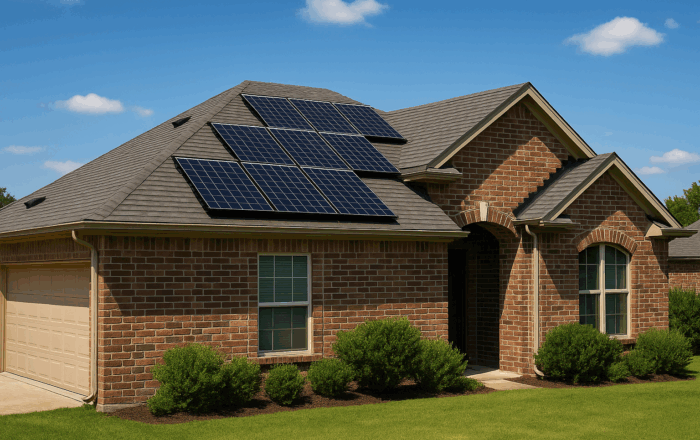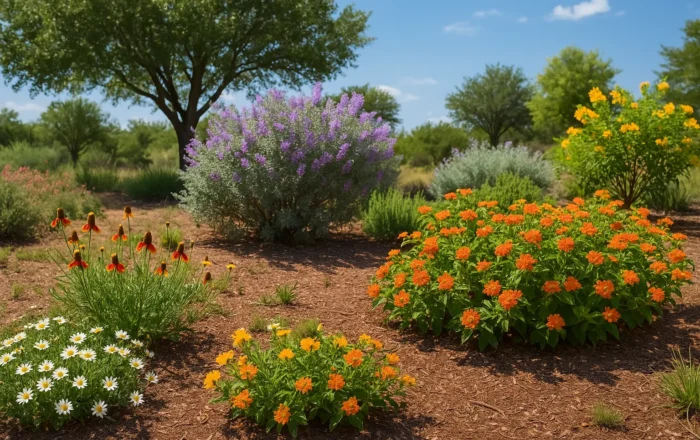Home Improvement Living in Texas
How Many Solar Panels Do You Need in Texas?
4 minute readHow to calculate the number of solar panels you need to power your Texas home
Home > BKV Energy Blog > All Posts > What is an HVAC System and How Do They Work?
4 minute read • Last update July 2025

An HVAC system, which stands for Heating, Ventilation, and Air Conditioning, is a technology used to regulate indoor temperature, air quality, and comfort. It’s commonly found in homes, offices, and buildings to ensure a pleasant and healthy environment regardless of the weather outside.
Thanks to the extreme high and low temperatures experienced throughout the year, HVAC systems are an essential part of living in Texas.
HVAC systems are comprised of the following components that each contribute to regulating internal temperatures.
The function of an HVAC system is based on three core processes: heating, cooling, and ventilation.
HVAC systems come in various configurations to suit different needs and spaces. Additionally, all systems leverage SEER ratings to help consumers understand how efficient their unit is. Simply put, the higher the SEER rating, the higher the energy efficiency of the HVAC system.
Split systems have separate units for heating and cooling. A furnace or heat pump provides heat, while an air conditioner handles cooling. These systems are common in residential settings. For people living in a warmer part of Texas where winter temperatures almost never drop below 35° to 40°F, a heat pump is typically the most efficient option.
Hybrid systems combine a heat pump with a traditional furnace. This setup allows for greater energy efficiency by switching between electricity and gas, depending on the weather. Hybrid systems are great for homeowners in colder parts of Texas such as Amarillo & the other parts of the panhandle. In the winter, the furnace will be a more effective system in heating the home versus in the fall and summer the heat pump will be utilized to heat/cool the home.
Ductless mini-split systems are ideal for spaces where ductwork is impractical. These systems consist of an outdoor compressor and indoor air-handling units, offering efficient and flexible climate control. Mini-split systems are often used in situations where ductwork doesn’t exist such as a such as a room addition, attic, sunroom, or garage.
Packaged systems integrate all components into a single unit, often installed on a building’s roof or exterior. They are space-saving solutions, particularly for commercial buildings such as offices, warehouses, hospitals, & etc.
Choosing the right electricity plan is crucial for maximizing savings on both heating and cooling systems. We offer straightforward homeowner electricity plans with fair prices, transparent communication, and no mind-boggling contracts.
These plans ensure you are able to keep your home cool in a Texas summer at a predictable cost. Getting started is easy. Just enter your zip code to compare prices with other providers and find the best plan for your household.
Graham Lumley, Digital Marketing Manager at BKV Energy, leads digital and traditional marketing strategies, focusing on educating Texans about the state's deregulated energy market. With over 8 years of marketing experience, he creates content to help consumers understand and save on their energy bills, bringing a fresh and dynamic approach to the industry.

Home Improvement Living in Texas
How to calculate the number of solar panels you need to power your Texas home

Gardening in Texas presents unique challenges. Long, hot summers and frequent droughts mean that traditional landscaping often requires significant water
Get $50 off your electric bill!
Use code BKVEJOINUS50
Enter your zip code to shop BKV Energy's affordable, fixed-rate Texas electricity plans. Use the promo code for $50 off your electric bill.